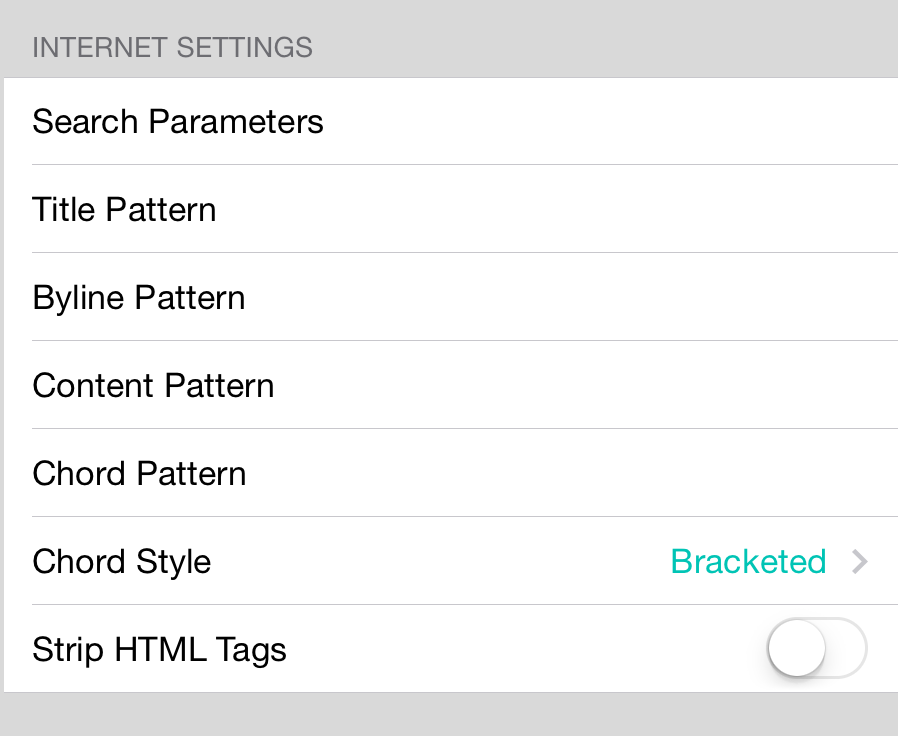User Manual
Internet Settings

Setting Internet settings is not a trivial task but does allow in-app searching of content from the Internet if configured properly. OnSong cannot provide these settings for you since it required that you agree and use the content of the web site in accordance with the web site's terms of use. If these settings are left blank, the in-app Internet search feature is disabled and you will need to use the Add To OnSong Safari Extension instead.
Note: OnSong uses a pattern-oriented programming language called Regular Expressions to define content to import. When written correctly, these strings of characters comprise patterns that can extract text from the content of a web page. Regular Expressions are using in the pattern properties below.
You can configure OnSong to search different websites using the following fields:
Search Parameters
OnSong uses Microsoft Bing to search for content on the Internet. While the query of your search is passed directly to the search engine, additional parameters for the search can be passed here such as the domain to be searched. The following example limits the search to the chords directory of a specific website:
site:http://www.domain.com/chords
Learn more about advanced Bing search parameters
Title Pattern
The title pattern is performed against the title attribute of the found page content and is used to extract the title of the song. The following example extracts Brown Eyed Girl out of the full title of the web page, Brown Eyed Girl By Van Morrison.
(.+?)(?=(( +Chords)|( +By)))
Byline Pattern
The byline pattern is performed against the title attribute of the found page content and is used to extract the byline or artist of the song. The following example extracts Van Morrision out of the full title of the web page, Brown Eyed Girl - Van Morrison.
(?<=[\-])(.+?)(?=\|+\s*)
Content Pattern
The content pattern is used to extract the content of the song from the full HTML content of the web page. Typically this content is placed in HTML <pre></pre> tags. The following example extracts the content from the pre elements in the HTML content of the found web page.
(?<=<pre>)(.+?)(?=</pre>)
Chord Pattern
In some cases, chords are marked up using HTML. OnSong can locate chords using a regular expression pattern as well. In this example, HTML <u></u> tags are used to denote chords in the HTML. The following pattern will extract those values and convert them into bracketed chords.
<u>(.+?)</u>
Chord Style
When content is encountered, it may be bracketed, or it may be plain text using chords over lyrics. You can configure the format that is expected from the web site here. For instance, if we choose bracketed and the previous chord pattern is used, the found chords are surrounded by square brackets.
Strip HTML Tags
While most chord charts in web pages are created as plain text within <pre></pre> tags, sometimes they contain extraneous HTML tags. Turn this option on to strip out extraneous HTML tags. Default is off.


